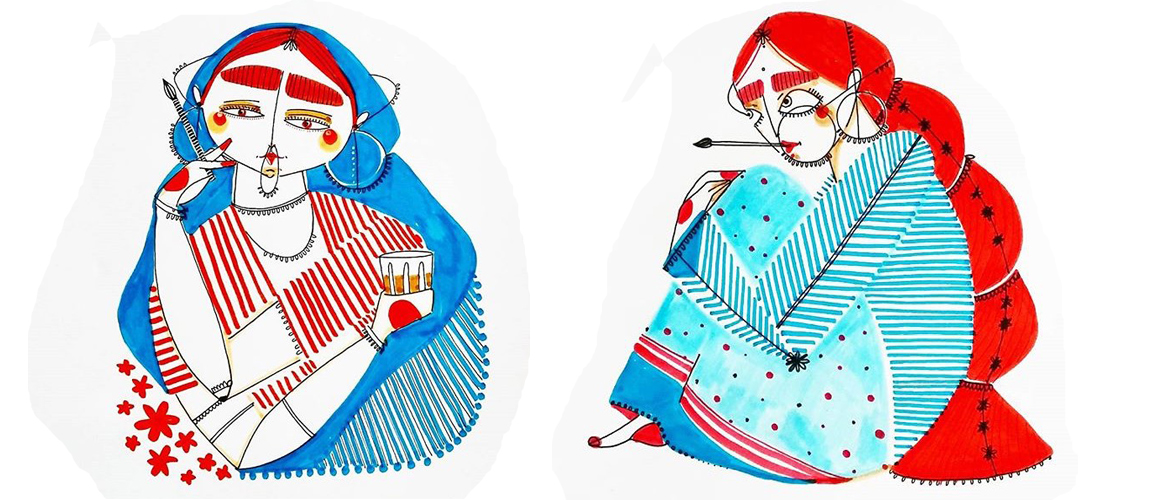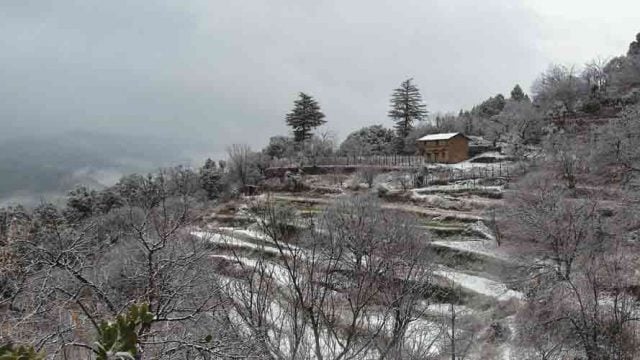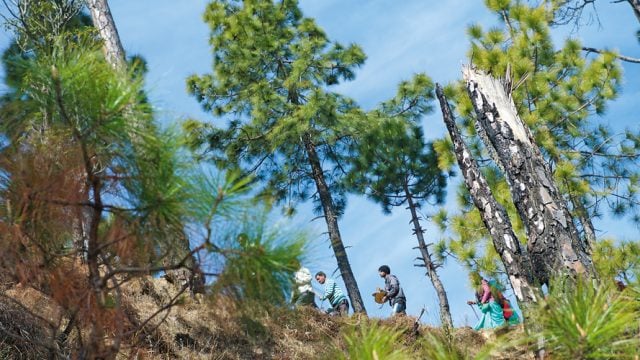Two childhood friends from Uttarakhand are on a mission to revive its cultural tradition, arts and cuisine.
Weavers of Bhotiya
Bhotiyas are a community of shephards and farmers found in the Garhwali regions of Uttarakhand. They weave shawls, blankets, carpets and occasionally adorn them with embroidery. It’s a skill passed on over generations. “Chiya’s mother used to hum a tune as she drew thread after thread”, recalls Tanya Kotnala. “It was my first encounter with a frame on which yarn is woven. Her mother had arranged each thread of wool with meticulous precision”. The meditative tune allowed her to concentrate on her design. She took her time and carefully chose the colour of the next yarn thread that would go on the frame.
The Promised Pichaura
Women, who dwell in the kamauni region of Uttarakhand, hold the Pichaura dupatta in great regard. “Pichaura is part of each and every pahadi girl’s traditional wedding”, confides Tanya Kotnala. “A variety of motifs feature on a saffron-mustard background in deep red. It is traditionally coloured in vegetable dye.” Even though a quintessential Pichaura simply dons red dots, the motifs range from swastikas to regular scenes from a village. It is considered auspicious for the bride. Pichaura is known to symbolize prosperity, fertility and a successful married life for married women.
Is Magenta edible?
“We were on our way to Nagthat (Jaunsar region of Garhwal) and noticed magenta fields on either side. To know that anything edible could be magenta in colour was amusement enough for us children then”, shares Tanya Singh. Amarnath seeds, locally known as chulai are grown by Jaunsari tribe and preserved from September onwards for the forthcoming winter. “As children, we did all we could to escape eating vegetables but this pink dish served to us got us excited, and well, hungry. The next morning, its seeds were served to us as breakfast cereals with milk. I am still quite astonished at the value of this one plant”, she says. Amarnath, one of world’s oldest crops is recommended by World Health Organisation. It has been categorized as a superfood too.
Grandma’s Mango Chutney
“Grandma’s hand moved in a rhythm on the sil-batta (pestle and mortar) as she ground mint leaves that would eventually go into the preparation of mango chutney”, reminisces Tanya Singh. She woke up with the rising sun and collected all the ingredients near her sil-batta. She patiently plucked the garlic cloves and peeled their skin off. She had a katori (vessel) by her side. It was her standard tool of measurement. “The grounding of masalas in the sil-batta woke us up! We rushed to the court-yard, fully aware of what was cooking. She greeted us with a warm smile, dug her finger into the chutney and placed it in our mouths. She was always up for a genuine feedback”! With time, the sil-batta got replaced by the electric mixer-grinder and she grew too old to make the chutney for us”.
This compilation of textiles, crafts and foods of Uttarakhand should come handy; for when you next visit the state, be a traveller, not a tourist
For more on responsible tourism, log on to responsibletourismindia.com
Bhuli Art
responsible tourism
art





